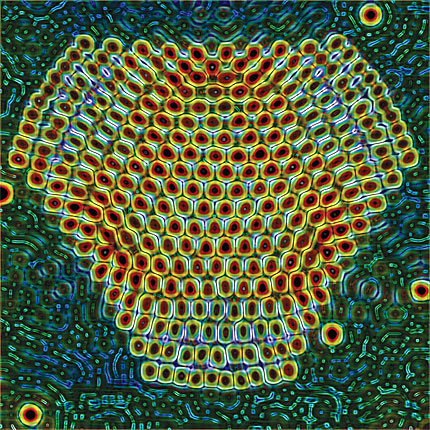Designer Dirac fermions
DOI: 10.1063/PT.3.1571
The development of ready ways to produce single layers of graphene has opened up a vast new playground for experimental and theoretical physicists alike. The peculiar electronic properties of the material have been of particular interest: Thanks to graphene’s honeycomb lattice, the valence and conduction bands touch, producing so-called Dirac cones that imbue the electrons with effectively zero mass (see the article by Andrey Geim and Allan MacDonald in PHYSICS TODAY, August 2007, page 35
To create their “molecular graphene,” the researchers use a scanning tunneling microscope to arrange carbon monoxide molecules one at a time on a copper(111) surface. The molecules repel the surface electrons below them, so when the molecules are placed in a triangular array, the electrons are left in a graphene-like honeycomb pattern. With their ability to control every molecule’s position, the researchers could craft designer potentials to explore new phenomena. In the example shown here, the dark spots in the topographic image mark the CO positions; the colors correspond to the electron density. The strained honeycomb lattice generates a pseudomagnetic field—with an effective strength of 60 tesla—that creates a quantum Hall state for Dirac fermions in a peculiar, ultraquantized ground state unprecedented in normal graphene. (K. K. Gomes et al., Nature 483, 306, 2012; image by Manoharan Lab, Stanford/SLAC, http://mota.stanford.edu
To submit candidate images for Back Scatter, visit http://contact.physicstoday.org

Image by Manoharan Lab, Stanford/SLAC, http://mota.stanford.edu.





